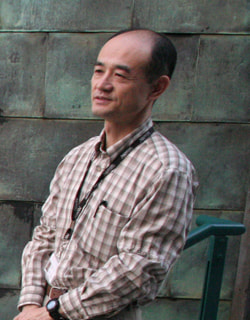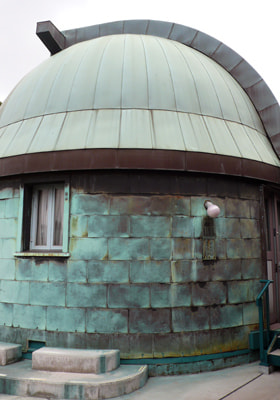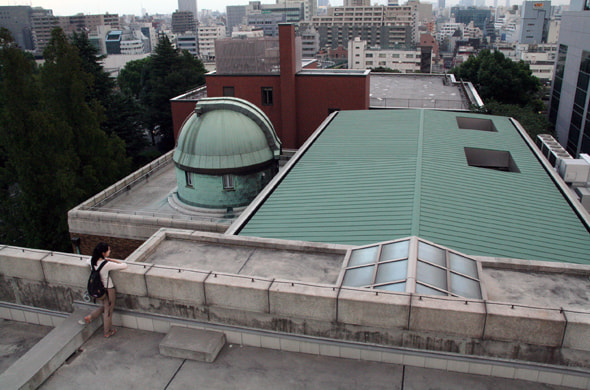
Deputy Section Manager Seiya Ikemoto at the public relations section of National Museum of Nature and Science
We talked with Deputy Section Manager Seiya Ikemoto at the public relations section of National Museum of Nature and Science.
Ikemoto : This is a dome for astronomical observation. This plate and old graffiti are things reminiscent of bygone days. Japan Gallery (former Main Building) was constructed in 1930, and the dome, which is placed on top of the building, was completed in October 1931, one year after the construction of the building. Since the end of that year, many people have visited the dome to observe stars. When the dome was completed, a 20cm equatorial refracting telescope was placed in it, through which astronomical observation was conducted. At that time, the dome was manually rotated, so it was difficult to see many stars. However, the dome was improved to move electrically in 1941, making it possible to observe several stars and others during one event of astronomical observation.(continued in the lower column)


This is the roof of Japan Gallery. The building was originally located in Yushima, but completely destroyed during the Great Kanto Earthquake. Later, the building was reconstructed in the present location as part of the earthquake rehabilitation project. The construction was finished in 1930, and officially completed in 1931. Since the building was built through the project, its structure is very sturdy. The quake-resistant engineering at that time, which made use of many steel frames and thick pillars, was applied to the building. As viewed from above, the building looks like an airplane, which was a symbol of the state-of-the-art science and technology at that time. We are now just standing atop a place that corresponds to a cockpit of the airplane.(continued in the next page)

Deputy Section Manager Seiya Ikemoto at the public relations section of National Museum of Nature and Science














